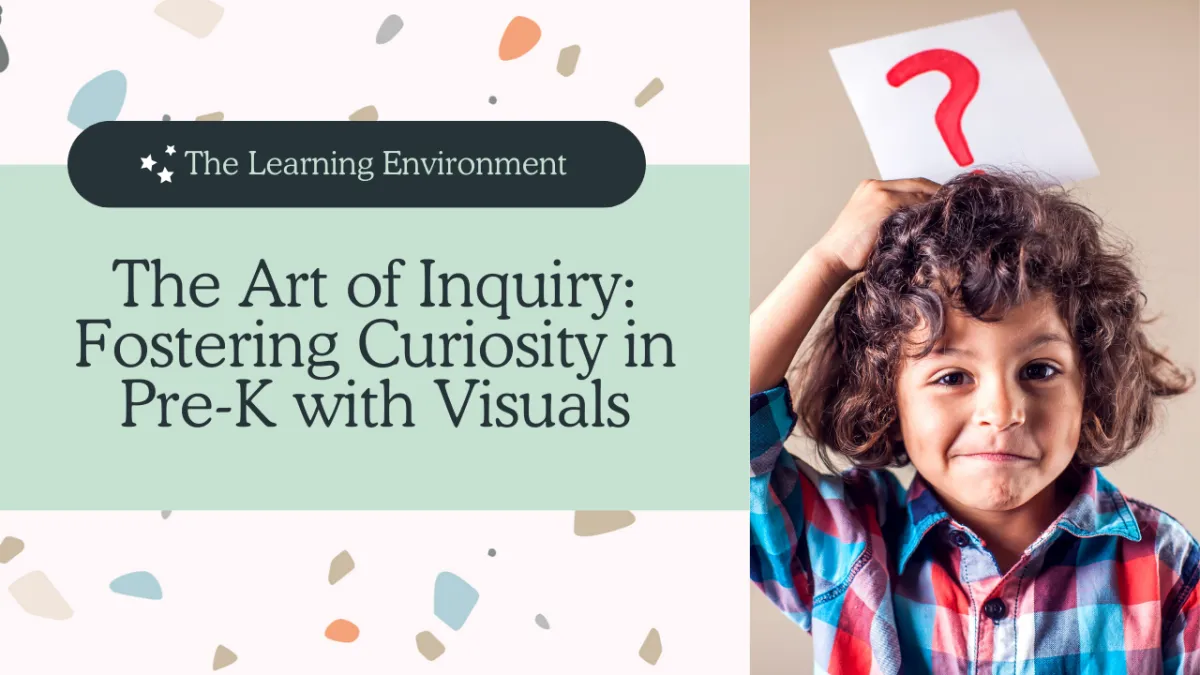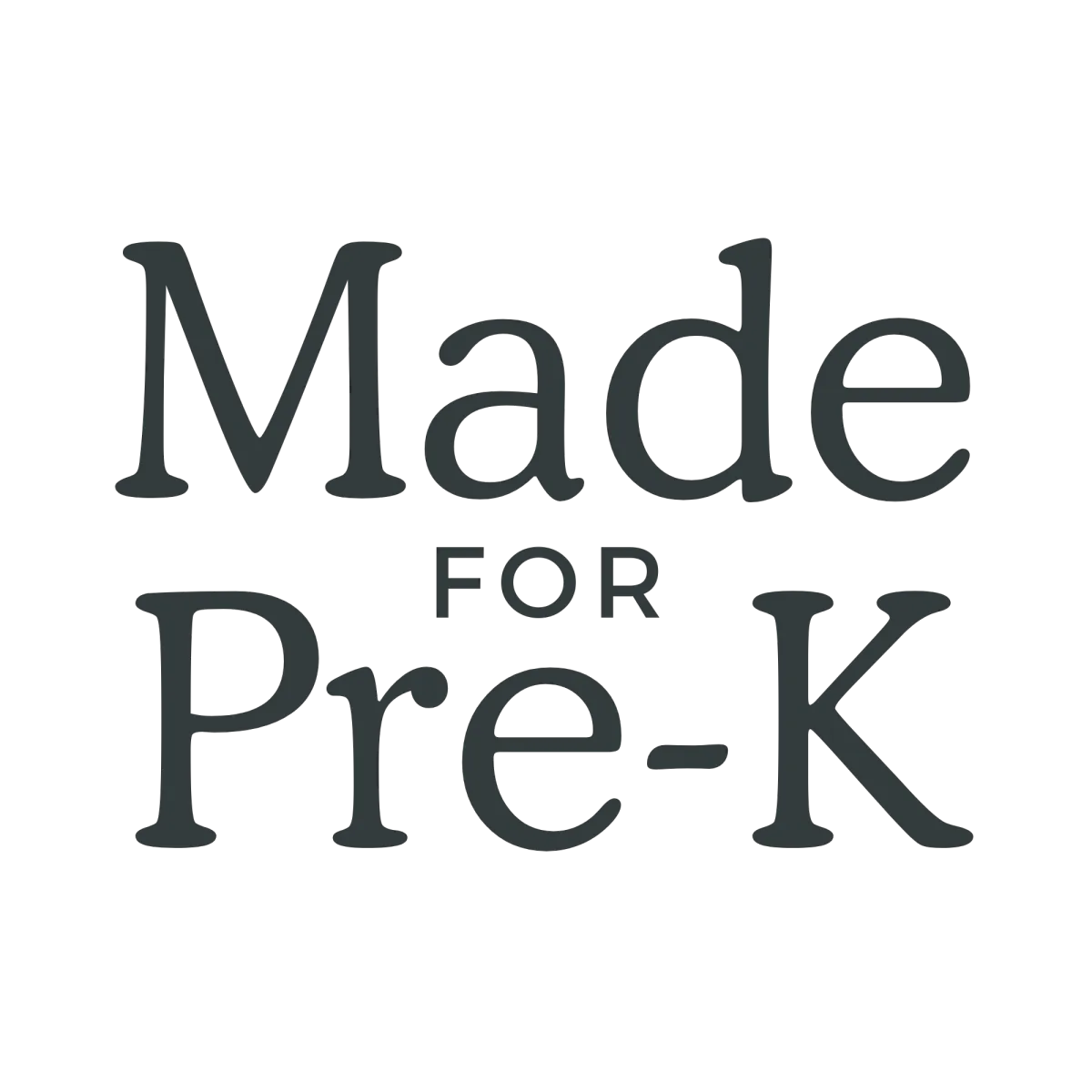

The Art of Inquiry: Fostering Curiosity in Pre-K with Visuals
In the heart of every child is a natural explorer, a budding scientist, or a curious historian, all yearning to understand the world. How do we ignite this intrinsic curiosity in our preschool classrooms, where the seeds of knowledge are gently sown?
The answer lies in the art of inquiry, particularly when nurtured by the strategic use of intentional visuals. This approach, deeply rooted in the philosophies of project-based learning (PBL) and Reggio Emilia, believes in empowering children to lead their learning journey through questions and exploration.
The Challenge of Curiosity
While children are inherently curious, the skill to form and articulate meaningful questions doesn't come naturally—it must be cultivated.
Traditional, teacher-led classroom settings often lean towards passive learning, where children are expected to absorb information rather than actively engage with it. This passive reception can stifle curiosity, making the leap to active inquiry daunting for young learners and teachers alike.
Visuals as Catalysts for Questions
Visual aids transcend being mere decorations; they are necessary tools that encourage children to wonder, to inquire, to think. A classroom rich in thoughtfully selected visuals can transform passive observers into active participants.
An image of a caterpillar on a leaf, sources of water, or a photograph of architectural wonders around the world can prompt questions like "How?", "Why?" and "What if?" This is especially helpful for our ELLs and students developing their language skills, including our young preschoolers.

Strategies for Encouraging Inquiry
Project Corners: Create an interactive space where children can pin questions that arise from classroom visuals and studies. This visual board becomes a collective exploration project, fostering a community of inquiry and collaboration.
Story Prompts: Incorporate visuals that align with the stories or studies under discussion. Strategic pauses with questions like "What do you think happens next?" encourage children to use visual cues for prediction, deepening their engagement with the narrative.
Role-Playing: Utilize visual cues for role-play, allowing children to embody characters from stories or for a new drastic play setup. This method enhances comprehension and empathy, providing a multidimensional understanding of the material.
Patience is Key
Cultivating an environment where inquiry thrives is a gradual process. It requires patience and understanding that each child's journey into question formulation is unique.
Some may take longer to ask questions, while others might initially respond with statements rather than inquiries. The objective is to consistently support and nurture this developmental journey, providing ample opportunities for growth.
Sometimes, it means restating their statement into a question, then having them repeat it for practice as you write it and read it back to the class.
The Journey Ahead
Embracing visuals in teaching goes beyond enhancing aesthetic appeal; it's about enriching the cognitive and emotional landscape of the classroom.
As educators, our role is to facilitate this exploration, guiding our young learners as they navigate through their curiosity with the help of visual aids. This is not merely about teaching children to learn but inspiring them to think, question, and explore—the essence of the art of inquiry.
By weaving visuals into the fabric of our curriculum and daily routines, we open a world where learning is driven by curiosity, and every question marks the beginning of a new adventure in understanding.
Our classrooms can turn into landscapes of inquiry, where visuals speak, teach, and inspire and where every child is an explorer on their own epic quest for knowledge.

© 2025 EARLY CHILDHOOD PLUS LLC
PO BOX 34894
CHICAGO, IL 60634 USA
FOR REQUESTS, QUESTIONS & CANCELLATIONS PLEASE CONTACT:
HELLO@MADEFORPREK.COM
DISCLAIMER & COPYRIGHT NOTICE
POTENTIAL OUTCOMES: WHILE THE MADE FOR PRE-K MEMBERSHIP AIMS TO PROVIDE RESOURCES, COMMUNITY, AND STRATEGIES TO ENHANCE THE PROFESSIONAL JOURNEY OF TEACHERS, INDIVIDUAL SUCCESS VARIES BASED ON EFFORT, AND DEDICATION. WE STRIVE TO OFFER VALUABLE INSIGHTS AND TOOLS, BUT SPECIFIC RESULTS CANNOT BE GUARANTEED.
COPYRIGHT NOTICE: ALL CONTENT, MATERIALS, AND RESOURCES WITHIN MADE FOR PRE-K MEMBERSHIPS ARE THE INTELLECTUAL PROPERTY OF EARLY CHILDHOOD PLUS. UNAUTHORIZED USE, REPRODUCTION, OR REDISTRIBUTION WITHOUT THE EXPRESS WRITTEN CONSENT OF EARLY CHILDHOOD PLUS IS STRICTLY PROHIBITED. ALL RIGHTS RESERVED.
These are independent resources created to support early childhood educators and are not officially affiliated with any curriculum publisher, brand, company, organization, or educational institution. All materials provided are intended as supplementary resources only.

